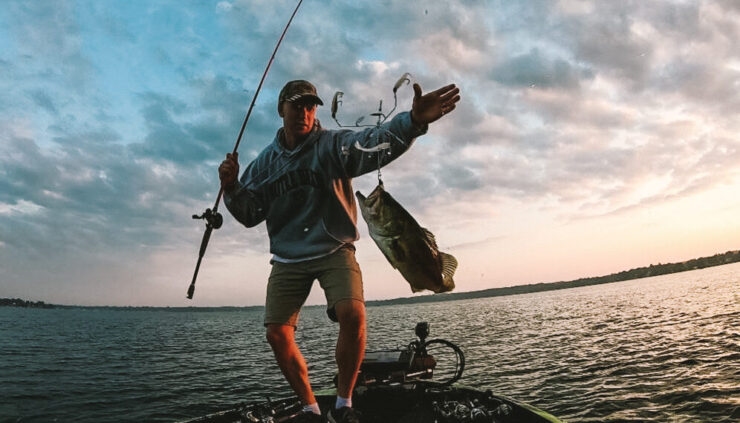Fishing enthusiasts know that each season brings changes to the habits and choices of fish. From the lazy heat of summer to the chill of winter, understanding how they adapt to these shifts is crucial. Knowing how to choose the right bait in each season can make or break a fishing trip. Below, we explore how these changes influence fish behavior and bait preferences, providing you with an edge in every season.
Key Points
- Seasonal shifts directly impact fish activity levels.
- Temperature changes drive fish to different depths.
- Adjusting bait style is essential with each season.
- Knowing when fish feed in each season leads to better catches.
- Specific bait colors, textures, and scents work better at certain times.
Spring – Warming Waters, Hungry Fish

Spring kicks off the feeding season. As the water warms, fish shake off the sluggishness of winter and become more active. Many fish species begin to spawn, and their need for energy rises, making them more aggressive feeders. Fish move to warmer, shallow waters during springtime, where food is plentiful. This means anglers have better chances in shallower areas near structures like rocks, submerged logs, and grassy patches.
A great bait choice in spring includes worms, small fish imitations, and lures that mimic natural prey. Many anglers find that bright colors work well in the early spring, especially for bass, who become very territorial and defensive during spawning.
To keep everything fresh and ready for action don’t overlook using a bait cooler like this one https://www.flopindustries.com/collections/bait-coolers.
Summer – Heat Waves and Depths
When summer arrives, water temperatures climb. Fish seek out deeper, cooler zones, where they remain until the early morning or late evening. They become less active during the day due to the heat, moving to shaded spots and deeper waters where food sources are consistent and temperatures are comfortable.
- Use Lighter, Natural Colors: Fish are picky in clear summer waters. Go for lighter-colored baits that reflect natural prey fish found in those depths.
- Focus on Mornings and Evenings: Fish are most active during the cooler parts of the day. Head out at dawn or right before dusk.
- Experiment with Live Bait: Fresh, live bait, such as minnows or leeches, often attracts fish better during this time, especially in well-oxygenated lakes and rivers.
Fall – Feeding Frenzy Before the Freeze

Fall brings a noticeable shift in fish behavior. Cooler waters create a sense of urgency, and fish prepare for the lean winter months by feeding aggressively. Fish become less selective and more opportunistic, taking almost any well-presented bait. The feeding window widens, and fish move between depths throughout the day.
- Match the Hatch: Fish are looking to bulk up, so using bait that resembles their favorite foods, like minnows and insects, works well.
- Try Soft Plastics and Crankbaits: Bass, in particular, respond well to crankbaits and soft plastics that mimic the look and movement of a struggling baitfish.
- Focus on Colors Like Red and Brown: These mimic crawfish, a common prey in the fall. Fish often target crawfish as they are easy to spot and catch.
Winter – Slow and Steady Wins the Race
In winter, fish slow down considerably. Colder temperatures reduce their metabolism, making them feed less often and in shorter bursts. Fish seek stable environments, often at the deepest parts of lakes or rivers, where the water temperature is slightly warmer and more consistent. They become less active, and patience becomes the angler’s best friend.
- Use Small, Simple Baits: Smaller baits, like jigs or small live worms, tend to work best. Fish are not as aggressive, so subtle baits are ideal.
- Keep it Slow: Slow movements work well with the fish’s sluggish energy levels. Rapid movements can scare them away.
- Focus on Midday: Fish tend to be slightly more active as the sun rises and warms the water by a few degrees, making midday the prime time.
Conclusion

Understanding how fish react to seasonal changes can greatly improve your fishing strategy. Fish are creatures of habit but adjust to conditions as they change with each season. Fish feed aggressively in spring and fall, preparing for spawning or winter, while their energy conservation mode in summer and winter requires extra attention to depth, bait choice, and timing. Knowing when and where to fish, and choosing bait that matches seasonal prey, can help you make the most of every fishing season.
So gear up with bait tailored to each season, consider the timing, and you’ll see how adapting to these natural patterns makes each fishing trip successful.

